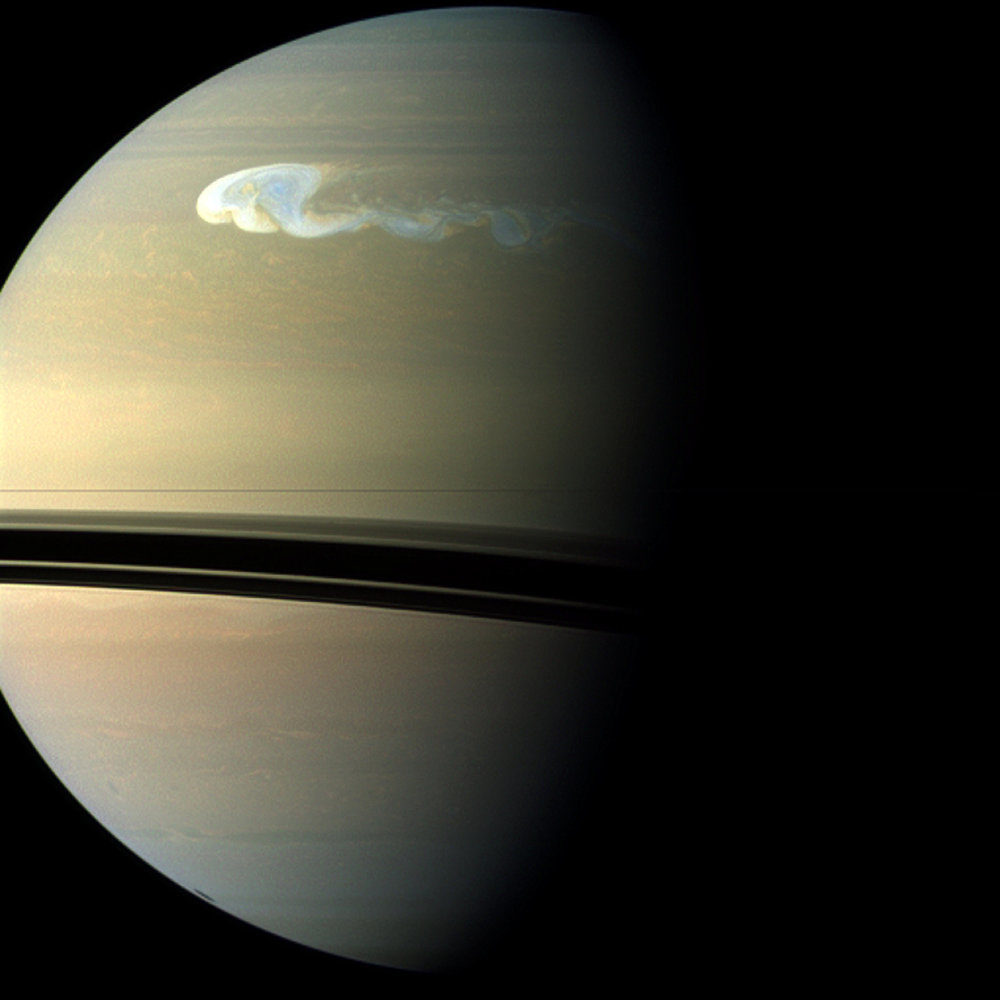Although the rings are known to be primairily water ice, modern science cannot determine the origin of all this ice, since the current hypothesis is that Jupiter and Saturn are 90% hydrogen and 10% helium. The leading hypothesis is that two comets, or a comet and a satelllite collided inside the Roche limit and the pieces ended up forming the rings. No concern is offered as to the similarity in the sizes of the chuncks of ice.
Cyclic Catastrophism
This new hypothesis presented herein contends that the entire solar system we observe, and experience, today was formed in the last 6,000 years - including Saturn's rings. The most fundamental aspect of this work is that Saturn and Jupiter are solid, highly deuterated, methane gas hydrate bodies, which comprise about 80% water, meaning that together they comprise 300 Earth-masses of water. When bodies like Shoemaker-Levy 9 impact Saturn they produce fusion explosions which eject the surface material, primarily water into space which freezes to form and contribute to the rings and that this has been occurring for the last 6,000 years. Evidence for such impacts has been visible in the last few decades, in the form of 'white spots' appearing at the top of Saturn's atmosphere (Figure 1) on the average of every 30 years, interpreted in the current paradigm as 'large storms'.
In fact, thousands of these impacts triggering fusion explosions have pounded Saturn in the last 6,000 years. The impacts have also resulted in the temperature excess and the apparent diameter of the planet, due to the mass of material blasted from the surface which has remained in the atmosphere. Saturn's total mass is only 0.3 that of Jupiter, showing that, since it composition is the same as Jupiter's, how much its atmosphere is expanded, resulting in an average density only half that of Jupiter.





Reader Comments
Gravity as an explanation for everything is getting old.
Remember, Saturn is also technically a 'sun' because its energy output is greater than its input.
Saturn = Lord of the Rings!
Purple... what kind/shade of purple BC?
Purple = Short-wavelength: Violet/blue + Long-wavelength: Red
Red pill and Blue pill combined... Truth and Lies!
3rd eye chakra... eggplant sort of.... we have the capabilities and capacities to see thru the fake truth!!
:like:
And i m saturnian!! Been spitting blood all my life.... but sure got my attention and focus and slap in the face haha!!
OMG... the explanation in material plane!! Wowa BC! (I am grateful to you).
[Link]
[Link]
Who knows...
Voyager I & II founded the first grand hoax using a custom IBM mainframe computer for CGI called VICAR. Do you know what a vicar is? its a person who stands in place of a bishop or other higher power, in this case - a computer that replaces the images of God with groundbreaking CGI that no other computer in the world could produce. JPL laughed in our face with the name of their operating system and filled the world's children's hearts with lies creating cognitive dissonance in anyone seeking the truth. Noting how few angles of Jupiter and Saturn imagery are available from the Voyager fly-by's might steer you in the right direction but don't expect to win this fight proving NASA lies either - they had every angle (in the literal sense) covered.
Voyager I & II founded the first grand hoax using a custom IBM mainframe computer for CGI called VICAR. Do you know what a vicar is? its a person who stands in place of a bishop or other higher power, in this case - a computer that replaces the images of God with groundbreaking CGI that no other computer in the world could produce. JPL laughed in our face with the name of their operating system and filled the world's children's hearts with lies creating cognitive dissonance in anyone seeking the truth. Noting how few angles of Jupiter and Saturn imagery are available from the Voyager fly-by's might steer you in the right direction but don't expect to win this fight proving NASA lies either - they had every angle (in the literal sense) covered.
if true.. that would mean that we could refuel there and take on water.
Merry Christmas everyone!!